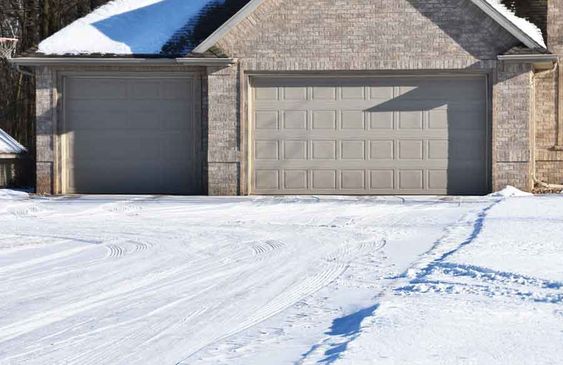How to Open a Garage Door That is Frozen Closed

During cold winter months, garage doors can sometimes freeze shut, preventing you from accessing your vehicle or belongings. Trying to force open a frozen garage door can lead to damage or injury
We will provide you with practical tips and techniques on how to safely open a garage door that is frozen closed, allowing you to regain access to your garage without causing any harm.
- Identify the Cause of the Freezing: Before attempting to open a frozen garage door, it’s essential to understand the cause of the freezing. Common culprits include frozen moisture, ice accumulation on the door’s seals, or frozen tracks. Inspect the door and surrounding areas to determine the source of the problem. If there is ice or snow buildup on the door or tracks, it needs to be addressed before attempting to open the door.
- Thawing the Ice or Snow: To safely open a frozen garage door, you will need to thaw any ice or snow that is causing the obstruction. Start by clearing away any loose snow or ice from the door’s exterior using a snow shovel or broom. For ice buildup, use a safe ice-melting product or create a mixture of warm water and a gentle detergent. Apply the solution to the affected areas, focusing on the seals and tracks. Allow the solution to sit and gradually melt the ice. Use a plastic scraper or a soft brush to remove any remaining ice or slush.
- Use Heat to Loosen the Frozen Door: If the garage door remains stuck due to frozen components, you can use heat to help loosen it. Carefully direct a heat source, such as a hairdryer or heat gun, to the affected areas. Be cautious not to use an open flame as it can pose a fire hazard. Start with the seals, applying heat to soften the ice and allow the door to break free. Move on to the tracks, focusing on any frozen sections. As the components gradually thaw, try manually operating the door to see if it opens.
- Lubricate Moving Parts: Once the garage door starts to open, it’s crucial to ensure smooth and safe operation. Frozen conditions can cause hinges, rollers, and other moving parts to become stiff. Apply a silicone-based lubricant to these components to reduce friction and prevent future freezing. Lubricate hinges, springs, rollers, and tracks according to the manufacturer’s recommendations. This will help maintain the functionality of the door and prevent it from freezing again in the future.
- Preventing Future Freezing: To avoid future occurrences of a frozen garage door, take preventative measures. Ensure that the garage is properly insulated to minimize temperature fluctuations. Seal any gaps or cracks that may allow cold air or moisture to enter. Install weather stripping around the edges of the door to create a barrier against the elements. Regularly clear away snow and ice from the door and tracks to prevent buildup. Applying a silicone-based lubricant to moving parts periodically can also help prevent freezing.
Call us now at +1(610) 750 – 9887 and receive a free quote
Opening a frozen garage door requires a cautious and systematic approach to prevent damage or injury. By identifying the cause of the freezing, thawing the ice or snow, using heat to loosen the door, lubricating moving parts, and implementing preventative measures, you can safely open your garage door even in freezing conditions.
